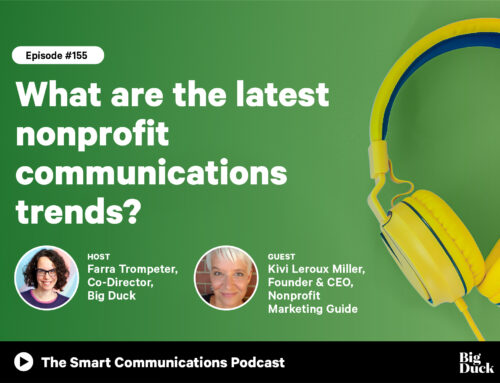
The M+R Benchmarks Study for 2021 came out late last week. I recommend you check out the full report for yourself, but these are the (sometimes random) things I found most interesting.
1. The big one that just can’t be ignored was online revenue increased a whopping 32%.
M+R had the foresight to account for missions that were related to the pandemic, the election, or social justice causes to see how they might skew the results. They found hunger and poverty groups had a 173% increase in online revenue and nonprofits that provided COVID relief had 40% increase in online revenue.
But organizations that did electoral work or who identified racial justice as a priority did not outperform those that did not.
2. Text subscriber lists are growing faster than email lists with a 26% increase for text audiences as opposed to just 3% for email.
That does not mean give up on email. The vast majority of nonprofits have had their email programs for much longer so there isn’t as much room for growth. And for every 1000 email subscribers there are only 50 text subscribers.
But engagement is much better for text than email:
The click-through rate for mobile fundraising messages was 6.3% (email: 1.7%), and the click-through rate for mobile advocacy messages was 10% (email: 3.3%).
3. Speaking of email, open rates increased to 21% (up 9 points) and unsubscribe rates declined by 5% to 0.18%.
We have long been proponents of nonprofits sending more email, but we would hear pushback that people would get annoyed and unsubscribe. With email volume up 17% and unsubscribes down, the numbers just don’t indicate that. We would like to see email volume spread throughout the year as opposed to the last month or so, but this is a good trend.
4. Nonprofits should look at their donation landing pages.
When you dive further into the email data, we see that subscribers who have already donated have about the same click-through rate as those who haven’t given before.
BUT what happens next marks a huge difference – only 8% of those who have never given before actually went through with the gift when reaching the donation landing page as opposed to 32% for previous donors.
The report mentions a couple possible factors for this divergence:
- Previous donors have their payment and contact information already stored online making it easier to donate
- Landing pages may not be as persuasive as they should be, but previous donors already know why they should give
Could your landing page be a hinderance for new prospects? See these 6 Essential Donation Page Best Practices from Classy to make sure you are getting those gifts from new prospects.
5. YouTube wasn’t mentioned.
About the same time I got the M+R report, another report landed in my inbox – Hootsuite’s Digital Trends 2021 report for April. The M+R report only had data on Facebook, Twitter or Instagram, but according to Hootsuite, YouTube has more users and is second only to Google when it comes to most-visited websites.
According to our own research (see below), nonprofits do not find YouTube as important as Facebook, Twitter or Instagram so it makes sense M+R didn’t focus on it, but with such a big audience, we should probably consider investing some more time there.
Social media in order of importance overall from our 2021 Nonprofit Communications Trends Report:
- Facebook Page
- Instagram Newsfeed
- YouTube
- Instagram Stories
- Facebook Group
6. An organic post on Facebook only reaches 4% of followers.
In case you needed more reasons to hate on Facebook. (Unless you are in the hunger and poverty sector which reported a 946% increase in Facebook Fundraisers revenue.)
7. Nonprofits need to have a good mobile website, but the money comes from desktop.
Half of website visits came from mobile users, BUT the majority of donation transactions come from desktop users. Desktop users give more too ($80 vs $42 for mobile).
8. The random sidebars.
Be sure to check out the right sidebar of the report. From crosswords to classified ads, these were a clever addition to the old-timey newspaper feel of the report.
So those are the insights I found most interesting in this year’s report. What did you find surprising?






